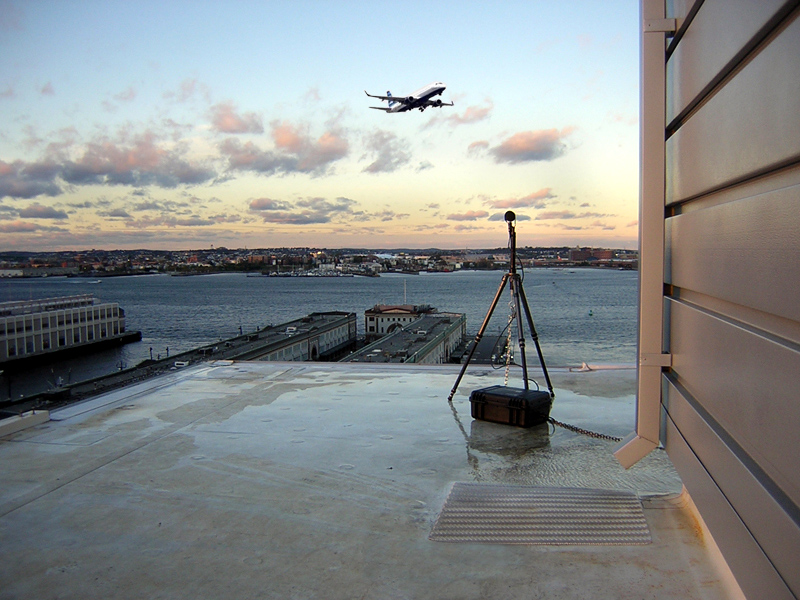Kelsey Rogers
Principal

An exciting mixed-use development featuring retail space, luxury residential units and amenities, is coming to the Seaport district of Boston. This district’s vibrant culture is rapidly attracting high-end residential and commercial developments, but its location in the flight path of Logan Airport presents acoustical challenges. We collaborated with the design team to ensure that residents will not be unduly disturbed by air traffic noise, while still allowing them to enjoy outstanding views of the harbor and city.
Choosing an appropriate glazing construction for the façade is critical to meeting the acoustical needs of residents. It also happens to be a decision that carries multi-million dollar consequences. To assist the design team in making the most well-informed and cost-efficient decision possible, we used 3DListening® technology to develop and present immersive, realistic simulations of environmental noise sources. In Acentech’s Cambridge 3DListening studio, the design team had the opportunity to listen to air and road traffic noise from a variety of simulated residential units, through five different glazing assemblies under consideration.
The 3DListening demonstrations were based on a CadnaA computer acoustical model that simulates environmental sound propagation. We calibrated the model using measurements of aircraft and road noise that we made on the site of the future building. Using the environmental sound model, we predicted noise levels due to both of these sources at the façade outside four residences in our building model. While this was a relatively straightforward task for road noise, different building facades “hear” aircraft noise differently. Counter-intuitively, it is the facades that face away from Logan Airport that most benefit from upgraded glazing. This is for two reasons:
By contrast, when a residence faces away from Logan Airport, the onset of noise is sudden – it “hits” the façade as soon as the plane passes over the building. And because the airplane is now passing overhead, the noise is coming off the backside of the plane – that is, at its loudest.
To incorporate this phenomenon into the 3DListening demonstration, we used measurement data and past experience to post-process recordings of aircraft flyovers. As a result, the design team was able to directly experience this counter-intuitive effect of aircraft being the loudest, and most disturbing, in residences that faced away from Logan Airport. Acentech’s 3DListening studio features loudspeakers that surround the listeners, and use ambisonics to create an immersive, spatial acoustic environment. For added realism, we incorporated a subwoofer into the demonstration to accurately represent the low-frequency “rumble” of the aircraft.
One member of the design team, who works in an office located nearby to the site of future building, noted that the road and aircraft noise sounded very similar to what she experiences on a daily basis. As a result of the productive 3DListening demonstration, the design team is investigating acoustically upgraded window assemblies in strategic locations. The entire design team can rest easier, knowing that they are basing their design decisions on direct listening experience, rather than confusing numbers.